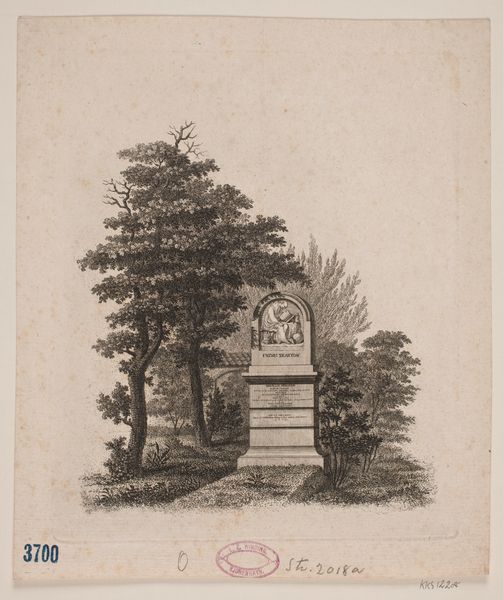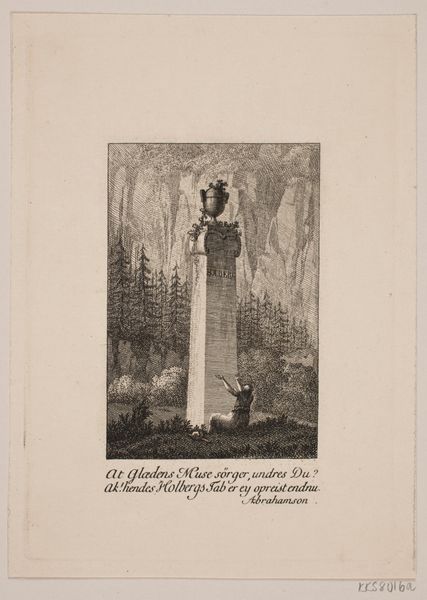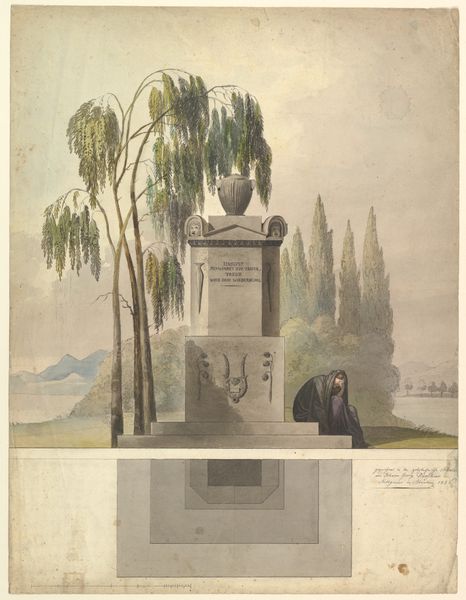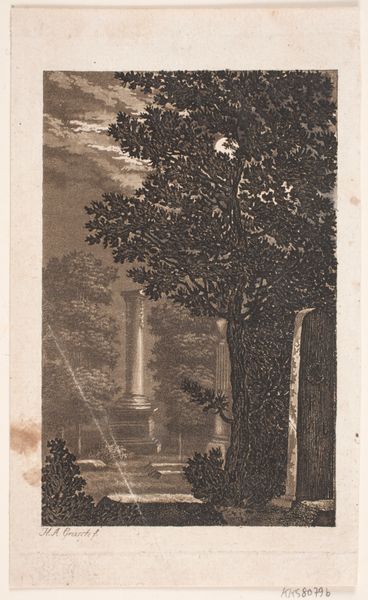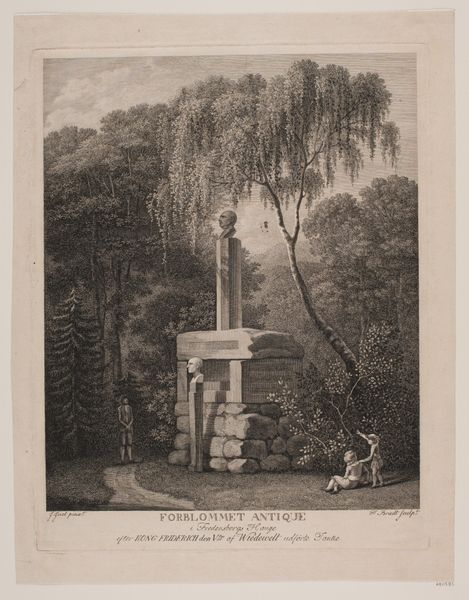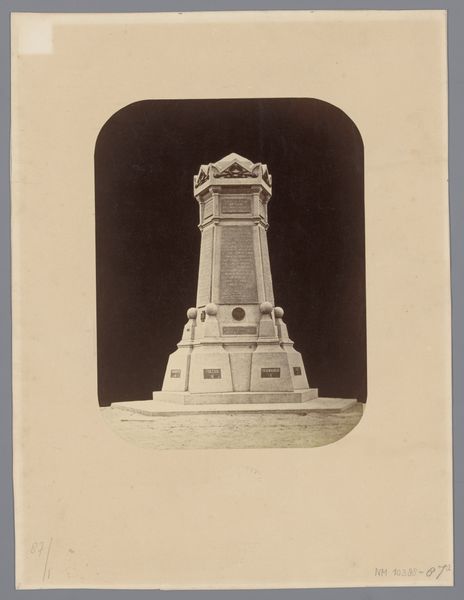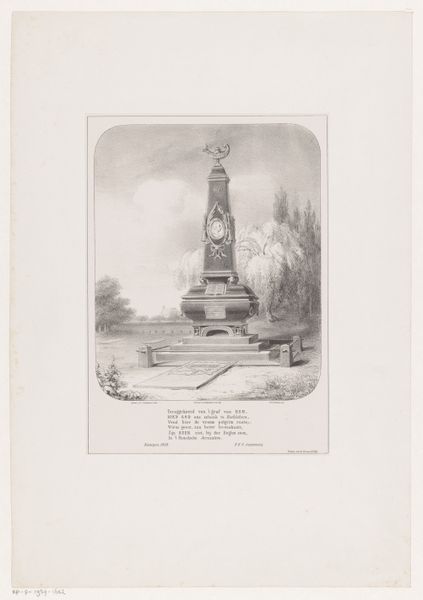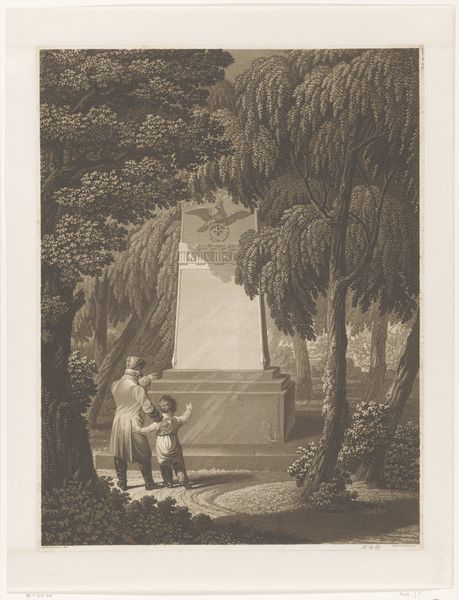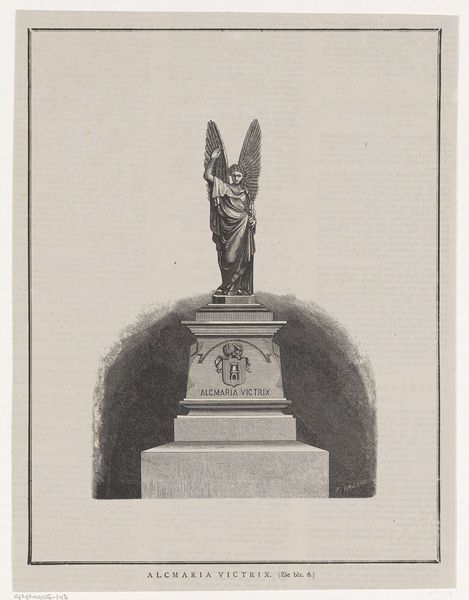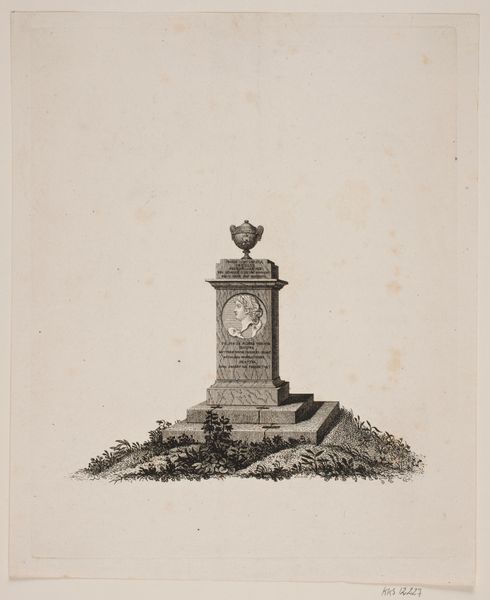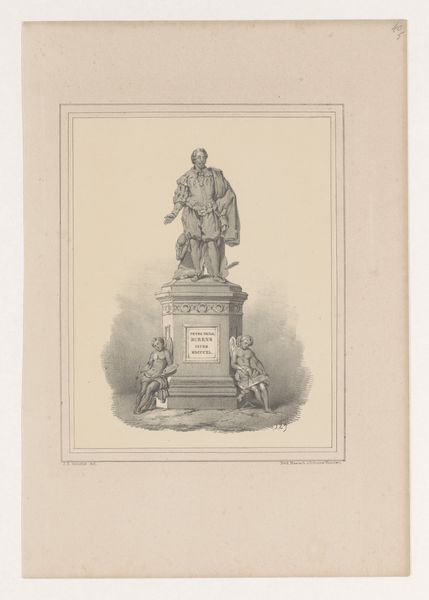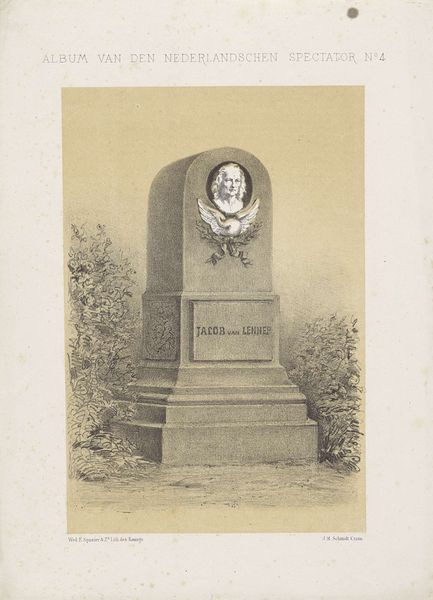
Bust of Schiller, from the series, Views in Central Park, New York, Part 3 1864
0:00
0:00
Dimensions: Sheet: 4 in. × 2 3/8 in. (10.2 × 6.1 cm)
Copyright: Public Domain
Editor: This is "Bust of Schiller, from the series, Views in Central Park, New York, Part 3," a lithograph from 1864 by Louis Prang & Co. It's a rather romantic, picturesque scene of a bust nestled amongst trees in Central Park. What strikes you about it? Curator: I'm drawn to how this image intersects with notions of public space, commemoration, and cultural identity in 19th-century America. Schiller, a German poet and philosopher, was revered, particularly within German-American communities. Why place his bust in Central Park? What did it mean to imbue this new urban landscape with European cultural figures? Editor: So, it’s more than just a pretty picture then! I guess I assumed it was just celebrating art. Curator: The visual representation here creates a powerful statement. Think about the politics embedded in such choices: Which figures are deemed worthy of memorialization, and by whom? How does this choice reflect or perhaps obscure the realities of a diverse and often marginalized populace within New York City? Editor: That’s a fascinating point. I hadn't considered the choices behind who gets remembered in public spaces. It seems like a very deliberate statement about cultural values. Was there any resistance to this sort of commemoration at the time? Curator: Certainly, and often along class and ethnic lines. Understanding the nuances of such social dynamics helps to excavate richer and more complicated meanings within what appears at first glance a simple commemorative scene. It speaks volumes about whose stories are told and whose are left in the shadows. Editor: This has completely shifted my understanding. I’m now thinking about how this artwork invites questions of identity, representation, and social power in ways I never imagined. Curator: Precisely. Art offers an incredible lens for examining and questioning the dominant narratives that shape our understanding of history and ourselves.
Comments
No comments
Be the first to comment and join the conversation on the ultimate creative platform.
